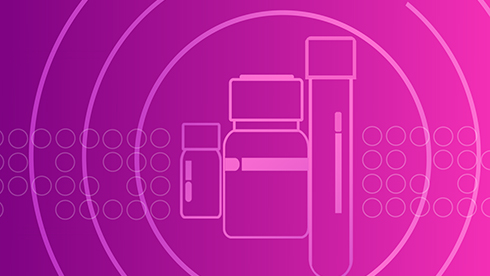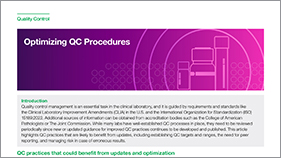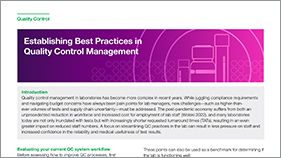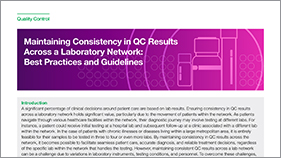Understanding control materials
Before diving into the evaluation of your vendors, it is essential to understand the different types of control materials available for QC. There are typically two sources of control materials: those that are provided by the instrument, kit, or method manufacturer (manufacturer-supplied controls) and control materials made by independent manufacturers (independent controls). Independent control materials are designed and manufactured without any input from instrument, kit, or method manufacturers.
One potential risk associated with using only manufacturer supplied or in-kit control materials is the lack of detection of performance shifts or subtle changes. These test kit manufacturer supplied control materials tend to be insensitive to such changes as they have been optimized specifically to work with a particular instruments or kit/method. As a result, there may be a risk of harm to the patient in situations where these control materials fail to identify performance issues. The lack of sensitivity in detecting changes may compromise the accuracy and reliability of test results, potentially leading to incorrect diagnoses or treatments that could adversely affect patient outcomes.
Independent controls, on the other hand, are a reliable option for monitoring instrument performance, as they are manufactured without any input from the instrument, kit, or method manufacturers. Due to their independence from any manufacturer, independent control materials can be used across different laboratory test systems.
Given the advantage of using independent control materials in enhancing QC processes, here are five tips for evaluating a current QC vendor. These tips will help a lab assess whether the vendor is providing a lab with reduced risk of errors and increased reliability of test results:

5 tips for evaluating your current QC vendor
1. Assess the Cost vs Quality of Control Materials
Consider the cost-effectiveness of the control materials provided by the vendor. While independent controls may be more expensive, they are generally more reliable, and because test results have a direct impact on patients’ test results, it is crucial that laboratories do not sacrifice quality for a lower cost. Evaluate the lab’s budget with a priority on QC materials and identify vendors that provide greater value.
2. Evaluate the Ease of Use of the Vendor’s Products
Examine the user-friendliness of the control materials provided by the vendor. Are the instructions clear? Is the required preparation time minimal? QC materials created with the user in mind can increase efficiency in the laboratory. Additionally, consider the shelf life of QC materials and the implications of crossover frequency to further streamline the lab’s workflow.
3. Assess the Vendor’s Track Record and Reputation
Research the vendor’s industry experience and reputation as a QC supplier. Look for a vendor that adheres to all relevant regulatory standards and has a track record of providing reliable products. Consider their reputation within the industry and gather feedback from other laboratories to ensure their trustworthiness.
4. Evaluate the Vendor’s Customer Service and Relationship with Your Lab
Assess the level of customer service provided by the vendor. Do they respond promptly to inquiries and issues? Make sure they have a reliable supply chain and offer options for lot reservations. Look for a vendor that strives to establish a long-term trusted partnership, providing easy access to product insert, training resources, and maintaining regular communication. Choose a vendor who is willing to work collaboratively with the lab to identify problems and develop solutions.
5. Consider the Vendor’s Data Management Solutions and Interlaboratory Comparisons
Evaluate whether the vendor offers data management solutions that are compatible with the lab’s systems and can be seamlessly integrated. These solutions should include training and support to ensure effective utilization. Additionally, look for vendors that offer interlaboratory comparisons with statistically significant peer group sizes that can help increase confidence in QC test results.
Conclusion
To ensure the highest standards of quality control, laboratories must regularly evaluate their vendors. By considering factors such as cost-effectiveness, ease of use, track record, customer service, and data management offerings, laboratories can make informed decisions about their QC vendors. It is crucial to assess vendors, explore alternatives if necessary, and forge partnerships that enable the lab’s long-term goals of providing reliable testing.




